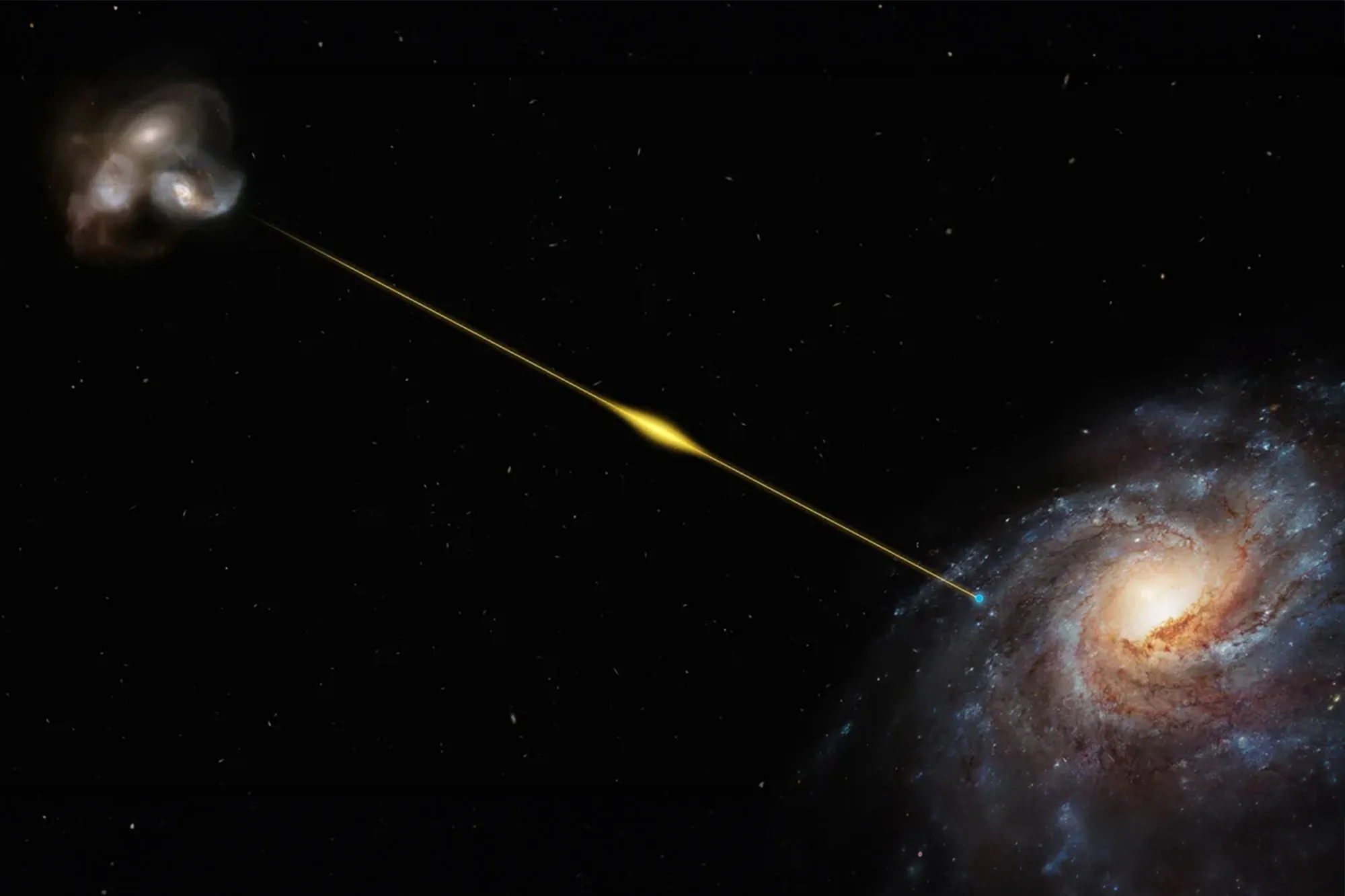Mysterious Fast Radio Bursts In Space Detected By SETI
Fast Radio Bursts (FRBs), enigmatic signals from the depths of space, have long perplexed astronomers and scientists. Recently, mysterious fast radio bursts in space detected by SETI (Search for Extraterrestrial Intelligence), have added new layers of complexity to the mystery.
Author:Hajra ShannonReviewer:Paula M. GrahamDec 18, 2023267 Shares66.7K Views

Fast Radio Bursts (FRBs), enigmatic signals from the depths of space, have long perplexed astronomers and scientists. Recently, mysterious fast radio bursts in space detected by SETI(Search for Extraterrestrial Intelligence), have added new layers of complexity to the mystery.
The signals, initially observed as rapid bursts of radio waves, are now revealing peculiar patterns and characteristics that challenge existing astronomical models, raising questions about their origins and nature.
Short-lived, powerful bursts of radio waves from deep space are known as FRBs. The mystery surrounding their origins is increased by the fact that certain "repeaters" emit signals more than once, but the majority only do so once.
Researchers observed repeater FRB 20220912A for 541 hours and found 35 FRBs. The ATA was used to make the observations, which covered a large spectrum of radio frequencies and showed some interesting trends. Every single one of the 35 FRBs, each with its own energy signature, was discovered in the lower frequency range.
FRBs were first discovered in 2007, and their origin remained a cosmic puzzle. These intense bursts of radio waves, lasting only milliseconds, appeared to come from far beyond our Milky Way galaxy. The sporadic nature of their occurrence and the lack of a discernible pattern made them particularly challenging to study.
According to the experts, every quick radio burst observation raises new concerns and provides new insights. The strongly magnetized cores of dead stars known as magnetars are thought to be the source of some rapid radio bursts, according to astronomers.
However, more study has indicated that the source might be collisions between white dwarfs, which are dead stars, or dense neutron stars.
Insights From SETI Institute’s Observations
Mysterious fast radio bursts in space detected by SETI. The organization detected a series of new signals, each exhibiting unique characteristics that set them apart from previous observations. The signals, while still brief in duration, displayed unusual patterns and frequencies, deepening the mystery surrounding these cosmic flashes.
SETI Institute’s Dr. Sofia Sheikh, NSF MPS-Ascend Postdoctoral Fellow and lead author, said:
“„This work is exciting because it provides both confirmation of known FRB properties and the discovery of some new ones. We’re narrowing down the source of FRBs, for example, to extreme objects such as magnetars, but no existing model can explain all of the properties that have been observed so far. It has been wonderful to be part of the first FRB study done with the ATA, this work proves that new telescopes with unique capabilities, like the ATA, can provide a new angle on outstanding mysteries in FRB science.- Dr. Sofia Sheikh
These observations also helped the researchers determine a cut-off point for the strongest bursts of FRB 20220912A, indicating its contribution to the total cosmic signal rate. As a matter of fact, during these observations, just a small percentage of all powerful FRBs in the sky were caused by this particular object.
In order to find repetition both within and between the FRBs, the study additionally looked at the burst sequences' temporal characteristics. The lack of a discernible pattern underscores the unpredictable nature of these astronomical occurrences.
Conclusion
Mysterious fast radio bursts in space detected by SETI. The mysterious fast radio bursts in space, with their recent quirks and repetitions, have become a captivating cosmic puzzle that defies easy explanation.
As scientists delve into the complexities of these enigmatic signals, the evolving nature of their study opens new frontiers in our exploration of the vast and mysterious cosmos.
The pursuit of understanding FRBs not only challenges our current astronomical models but also invites us to contemplate the profound mysteries that lie beyond the reaches of our cosmic comprehension.

Hajra Shannon
Author

Paula M. Graham
Reviewer
Latest Articles
Popular Articles